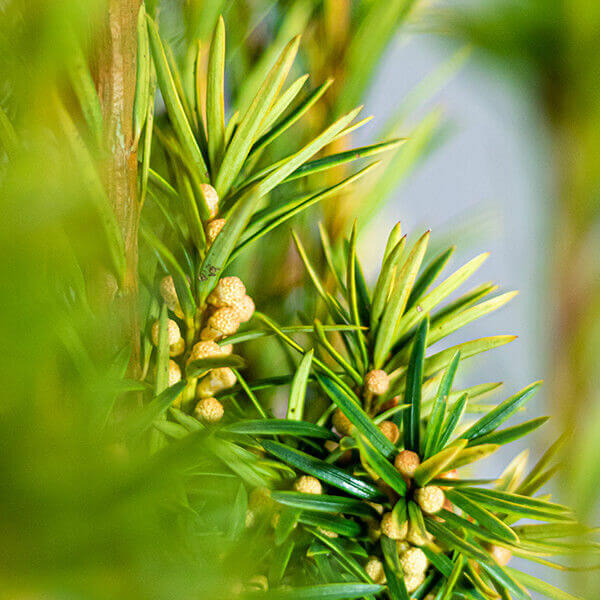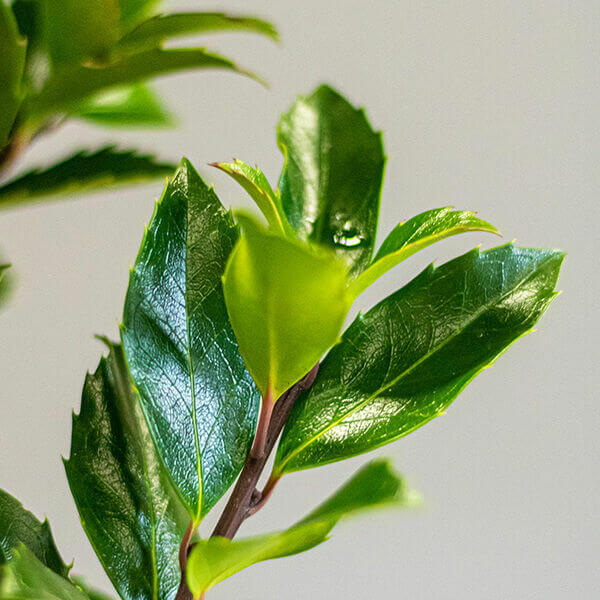Best Hedging Plants For Leaf Color
Best Hedging Plants For Leaf Color
Blog Article
Best Hedging Plants For Garden Screens
Enhance your garden's allure with lavish hedge varieties such as Yew (Taxus), Thuja, Laurel, Photinia, and Bamboo, commemorated for their structural integrity and ecological advantages.
Yew and Thuja offer evergreen coverage and winter season resilience, while Laurel provides quick growth and broad, aromatic leaves.
Photinia includes seasonal charm with its dynamic red foliage, and Bamboo provides a low-maintenance, serene atmosphere.
These hedges enhance air quality, minimize noise, and develop tranquil, private spaces.
Correct planting, spacing, and maintenance guarantee energetic development and ecological harmony.
Check out how these lavish varieties can elevate your garden's charm and wellness.
Secret Takeaways
Transform Your Garden With Lush Hedge Varieties
- Select Yew for its dense, evergreen development and unequaled longevity.
- Choose Laurel for its fast growth and broad leaves, guaranteeing fast privacy.
- Select Photinia for its dynamic seasonal foliage, which turns a striking dark red.
- Use Bamboo for a low-maintenance, winter-hardy hedge with visual appeal.
- Area plants 2-3 per meter and prune regularly for optimal growth and health.
Popular Hedge Plants
When transforming a garden with rich hedge varieties, it's necessary to think about popular hedge plants such as Yew, Thuja, Laurel, and Photinia due to their special attributes and advantages.
Yew (Taxus) is extremely respected for its longevity and thick, green development, making it a prime choice for enduring landscapes.
Thuja is noted for its evergreen foliage and robust winter resilience.
Photinia adds seasonal vibrancy with red leaves that darken over time, producing dynamic visual appeal.
Laurel offers fast growth and fragrant, broad leaves, perfect for fast personal privacy.
Additionally, Bamboo is an outstanding choice for ambiance, offering a low-maintenance, winter-hardy option that enhances the garden's visual with its classy, swaying walking canes.
These selections cater to a range of horticultural requirements and preferences.
Benefits of Garden Hedges
Garden hedges use a plethora of advantages, making them a valuable addition to any landscape. These natural barriers are affordable to implement and supply considerable wind protection, boosting air flow and contributing to sound reduction. The dense foliage of hedges like Thuja and Beech makes sure privacy by obstructing visibility, producing a remote and serene environment.
Hedges likewise play an important role in microclimate policy, providing a steady environment that fosters plant development and reduces temperature level changes. Their intricate leaf structures filter contaminants, improving air quality and contributing to a much healthier garden community.
Additionally, hedges excel in sound decrease, taking in and deflecting acoustic waves to lower ambient noise levels. This double functionality of offering both visual and acoustic privacy boosts the total serenity and visual appeal of any garden.
Planting and Maintenance Tips
For an effective hedge, precise preparation of the planting location is crucial. Guarantee the soil has correct pH and drainage to support strong root development.
Area the plants properly for the chosen species. Water the hedge often throughout its preliminary growth phase, changing as required with seasonal modifications.
Implement a methodical pest control and disease avoidance strategy, using chemical or natural treatments when essential. Regularly inspect for aphids, mites, and fungal infections.
Apply mulch to keep wetness and reduce weeds. Seasonal pruning promotes thick development and air circulation, important for plant health.
Following these guidelines will help you cultivate a dynamic, properly maintained hedge that boosts the appeal of your garden.
Spacing and Cutting Guidelines
Spacing and Trimming Guidelines
Proper spacing and trimming are crucial for cultivating healthy, visually appealing hedges. Adequate spacing ensures each plant receives sufficient nutrients, light, and airflow.
Follow these guidelines for optimal hedge maintenance:
- Spacing: Position hedge plants 2-3 plants per meter to encourage robust growth.
- Pruning Techniques: Regular pruning is necessary for maintaining preferred hedge height and shape. Cut brand-new growth in summer and cut back older wood during winter.
- Seasonal Care: Adjust trimming schedules and techniques according to seasonal requirements to guarantee plant health.
- Hedge Height: Routinely screen and trim to maintain the desired hedge height and attain consistent aesthetic appeals.
Adhering to these actions will guarantee your hedge prospers, improving both the appeal and functionality of your garden.
Picking the Right Hedge
Selecting the Right Hedge
Selecting the proper hedge includes assessing factors such as fully grown height, foliage density, and environmental resilience. Successful hedge plant choice requires understanding each types' growth characteristics and site-specific flexibility.
For example, Yew (Taxus) uses outstanding longevity and thick growth, while Thuja is significant for its winter strength. Additionally, thinking about upkeep requirements is important; fast-growing species like Laurel or Privet need regular cutting, whereas low-maintenance options like Bamboo or Ivy may be preferable for those looking for minimal maintenance.
Environmental elements such as soil type, light schedule, and moisture conditions need to also direct the selection process. This mindful approach ensures the chosen hedges will thrive, supplying both aesthetic and functional advantages to the garden landscape.
Delivery and Planting Suggestions
To ensure your hedge plants prosper, they need to be delivered by specialized carriers and planted promptly upon arrival.
Follow these important actions for effective planting:
- Soil Preparation: Enrich the soil with raw material to enhance drain and nutrient content.
- Planting Depth: Produce a trench two times the width and equivalent to the depth of the root ball.
- Watering Techniques: Water thoroughly after planting, keeping the soil consistently wet but not filled.
- Mulching: Use a layer of mulch to retain moisture and suppress weeds.
Client Assistance and Service
Offered the vital role of timely assistance in horticultural pursuits, our client support group is readily available 6 days a week through telephone, e-mail, and social networks to offer expert guidance and promptly attend to any issues. Their devotion to fast action times makes sure consumer satisfaction by resolving queries related to plant health, optimal planting approaches, and maintenance schedules.

Interaction Method
----------------------
Within 24 hr
This thorough support system, reinforced by an outstanding 9.3/ 10 customer ranking, highlights our dedication to enhancing the gardening experience for every single client.
Often Asked Concerns
The Length Of Time Does It Take for Hedge Plants to Develop?
Hedge plants generally require one to 3 years to become totally established, with the specific period varying by types and growing conditions.
Effective care during this important period is important for robust development. Constant watering, alert weed control, and appropriate fertilizer application are critical in promoting strong root advancement.
For example, fast-growing species like Laurel may establish faster, while slower-growing ranges such as Yew might take longer. Thorough upkeep accelerates the establishment process, resulting in dense and healthy hedges.
What Are the Finest Hedge Plants for Personal Privacy?
The question of the very best hedge plants for privacy involves assessing evergreen and deciduous choices.
Evergreen hedges like Thuja, Laurel, and Cypress offer year-round protection, making sure continuous privacy.
In contrast, deciduous hedges such as Beech offer seasonal privacy, shedding leaves in cooler months.
Secret maintenance suggestions for privacy hedges include routine cutting, fertilizing in spring, and correct spacing-- usually 2 to 3 plants per meter.
In addition, constant watering and thorough weed removal are crucial for promoting healthy, thick growth.
Can Hedge Plants Attract Wildlife to My Garden?
Yes, hedge plants can bring in wildlife to your garden by offering important advantages like shelter, food, and nesting sites, thereby boosting local biodiversity. Yew, holly, and laurel are exceptional for bring in birds, while ivy supports a range of bugs.
However, it is necessary to keep in mind that there are some drawbacks, such as increased maintenance to handle bugs and regular maintenance. Carefully picking and maintaining hedge varieties can assist balance these advantages and downsides, eventually fostering a dynamic and sustainable community in your garden.
Exist Any Blooming Hedge Plants Available?
Yes, there are flowering hedge plants available that can improve the appeal of your garden.
For example, Elaeagnus, also called Olive Willow, produces aromatic white flowers in the fall, including a touch of elegance.
Photinia, another popular choice, showcases dynamic red leaves that grow into an abundant green, creating a dynamic visual impact throughout the seasons.
To make sure these plants grow, it's important to practice appropriate pruning methods and seasonal upkeep, such as cutting brand-new development in the summer and cutting back in the winter.
These steps will assist preserve the health and visual appeal of your blooming hedges.
How Do I Avoid Bugs in My Hedge Plants?
To avoid bugs in hedge plants, use natural bug control approaches and keep proper hedge care. Introduce beneficial insects like ladybugs, which prey on hazardous insects, to produce a well balanced community.
Routinely examine your hedges for signs of invasion and without delay get rid of any afflicted parts to prevent the spread. Guarantee the health of your hedges by applying balanced fertilizers and supplying appropriate water.
Make use of mulching to keep soil moisture and proper spacing to reduce plant tension and promote robust development. These practices collectively help in minimizing bug concerns and preserving a healthy hedge.
Conclusion
In essence, choosing the right hedge ranges such as Yew, Thuja, and Laurel can transform any garden into a tranquil sanctuary. These plants offer year-round greenery, enhance visual appeal, and offer useful advantages like noise reduction and wind defense.
Correct planting methods, accurate spacing, constant watering, and seasonal trimming are vital for optimum growth.
Reputable delivery services and professional customer assistance guarantee a seamless experience from purchase to planting, making it easier than ever to elevate your outside space.
Garden hedges use a wide range of advantages, making them an important addition to any landscape. These natural barriers are cost-effective to execute and provide substantial wind protection, enhancing air Browse this site blood circulation and contributing to noise decrease. The dense foliage of hedges like Thuja and Beech guarantees personal privacy by obstructing exposure, creating a secluded and tranquil environment.

Pruning Methods: Regular pruning is essential for maintaining wanted hedge height and shape. Trim new development in summertime and cut back older wood during winter season.
Report this page